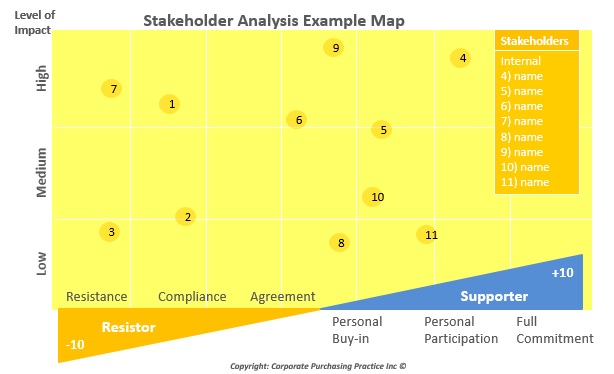The Brave CPO Part 1
The Brave CPO: Managing Stakeholders
The Brave CPO: Managing Stakeholders. In previous post I have talked about procurement’s internal challenges managing stakeholders and balancing their needs and wants with business requirements. To do this procurement must analyse its own goals and objectives and identify the key relationships necessary to attain these.
Even if you’re meeting your objectives, you could enhance procurements performance by implementing a relationship improvement plan. This requires procurement to consider how it fits into the larger business process, understand its role and develop its value proposition. In practice this can be challenging given the historical base that most procurement functions come from and requires a special kind of procurement executive to rise to the challenge:
1. Value chains
Any business is like a link in a value chain that connects the seller of goods and services to end customers. Procurement is not discretionary in this value chain. All companies must buy, add value and deliver this value to their end customer. For this reason Purchasing Practice believes all CEO’s must regard sourcing and procurement as a core competency in their organization.
While procurements value proposition is increasingly recognized, its ability to deliver the promised value is substantially influenced by its internal stakeholder relationships that can either support or destroy procurements value added contribution. A key but often over looked tool for any procurement organization is to develop a stakeholder strategy:
2. Stakeholder Strategy:
In most organizations different functional areas often have their own agendas that compete with those of other functions and in many cases conflict with wider organizations goals. Procurement must therefore develop internal stakeholder relationships that move everyone toward common objectives. To determine which relationships you should develop, take the following steps:
1. Map your stakeholders
In order to know its stakeholders better procurement should spend time analyzing its current relationships and priorities them by importance, potential impact and greatest potential to deliver value. This involves developing answers to questions such as:-
Which stakeholders are likely to support you or resist you:
- Understand any possible objections, key issues and their impact on procurement’s goals
- Identify what you need from them and what they need from you
- What sources of power do they have and what are procurement’s sources of power
- Are there stakeholders with whom you don’t have any relationship but clearly should have
- What’s in it for stakeholders to collaborate with procurement?
2. Identify improvement strategies
Examine how each key stakeholder relationship functions and then determine if building strong partnerships with them will be mutually advantageous. Ask yourself do procurement’s stakeholders:-
Consult and coordinate with them in the early stages when developing their plans?
- Integrate their processes with them?
- Shift resources to procurement quickly and willingly when needed?
- Readily form cross-functional teams to collaborate on joint initiatives?
- Share ideas, resource and information or engage in protectionist turf wars?
- Regard people from procurement as valued collaborators, not outsiders and competitors?
If the answer is “no” to any of the above questions, procurement clearly has an opportunity to improve its overall effectiveness by developing improved stakeholder relationships and these answers will help develop an improvement road map.
3. Challenge the status-quo
Traditional boundaries can obscure the possibility of deeper integration with internal stakeholders. An important step in building more effective relationships is to challenge those boundaries. Most procurement functions will recognize the concept of departments as silos. They will have come across marketing, IT and HR departments who keep them at arm’s length, have their own agenda and steer their own course independently of procurement. These silos discourage collaboration and integration across the organization and impede goal achievement. Challenging boundaries means changing your mindset so that you can modify your behaviour. This takes us back to the concept of value chains.
Identifying the value chain in your organization and understanding how procurement fits into it, will form an agenda for procurement and its key stakeholders to align their goals and objectives with the wider organization.
The Brave CPO: Manageing Stakeholders
Conclusion
The challenge for procurement is to move from stakeholder management to stakeholder collaboration to create value. To achieve this, procurement must develop strategies to move beyond managing stakeholder demands towards developing a network of collaborative mutually beneficial relationships where procurement has equal status with its key stakeholders. This represents a significant shift for many procurement leaders’ philosophy and attention, away from meeting the singular needs and interests of individual stakeholders towards understanding and responding to their interests and perspectives and balancing these with the requirements of the wider organization.
This requires procurement leaders to abandon a sub-ordinate mindset and have the courage to place their heads above the parapet and lead. Only then will procurement truly come of age and this will require a new breed of ‘Brave CPO’
Nuff said …
See The Brave CPO Part 2 here


